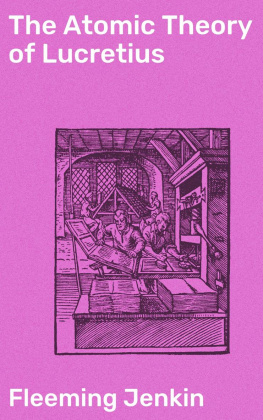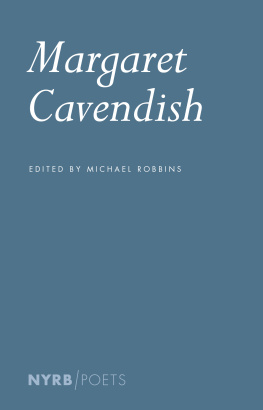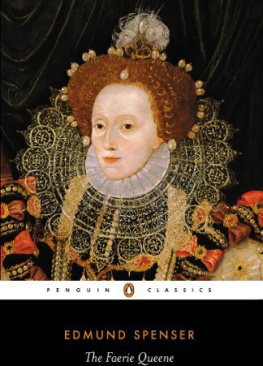The Seeds of Things
JONATHAN GOLDBERG
The Seeds of Things
THEORIZING SEXUALITY AND MATERIALITY
IN RENAISSANCE REPRESENTATIONS

Copyright 2009 Fordham University Press
All rights reserved. No part of this publication may be reproduced, stored in
a retrieval system, or transmitted in any form or by any meanselectronic,
mechanical, photocopy, recording, or any otherexcept for brief quotations
in printed reviews, without the prior permission of the publisher.
Fordham University Press has no responsibility for the persistence or
accuracy of URLs for external or third-party Internet websites referred to in
this publication and does not guarantee that any content on such websites is,
or will remain, accurate or appropriate.
Library of Congress Cataloging-in-Publication Data
Goldberg, Jonathan.
The seeds of things : theorizing sexuality and materiality in Renaissance
representations / Jonathan Goldberg.
p. cm.
Includes bibliographical references and index.
ISBN 978-0-8232-3066-2 (cloth : alk. paper)ISBN 978-0-8232-3067-9 (pbk. : alk. paper)
1. English literatureEarly modern, 15001700History and criticism.
2. Sex in literature. 3. Material culture in literature. 4. Philosophy in
literature. 5. Lucretius Carus, TitusInfluence. I. Title.
PR428.S48G65 2009
820.9353809031dc22
2009010180
Printed in the United States of America
11 10 09 5 4 3 2 1
First edition
for Michael Moon, again, and always
CONTENTS
ILLUSTRATIONS
Plates follow p. 000.
Acknowledgments
Chapter 1 draws upon an essay with the same title that appeared in an especially queer issue of Massachusetts Review 49, nos. 1 and 2 (Spring/ Summer 2008); some passages from Chapter 3 appear as The Play of Wanton Parts in The Forms of Renaissance Thought, ed. Leonard Barkan, Bradin Cormack, and Sean Keilen (Palgrave, 2009), a few paragraphs of which also can be found in Literary Criticism, Literary History, and the Place of Homoeroticism, in Early Modern English Poetry: A Critical Companion, ed. Patrick Cheney, Andrew Hadfield, and Garrett A. Sullivan, Jr. (Oxford University Press, 2007). Chapter 4 builds upon Margaret Cavendish, Scribe, GLQ 10, no. 3 (2004), and Lucy Hutchinson: Writing Matter, ELH 73, no. 1 (Spring 2006). I delivered papers that lie behind this book at The Folger Library, The Newberry Library, American University, Cornell University, University of Cyprus, Emory University, University of Hawaii, Northwestern University, and Stanford University, and Im grateful to audiences on those occasions for a number of good discussions. I would be remiss if I didnt thank for hospitality extended and intellectual stimulation David Baker, Bradin Cormack, Barbara Correll, Ellis Hanson, Jeff Masten, Madhavi Menon, Maria Margaroni, Rick Rambuss, Masha Roskalnikov, Evy Varsamopoulou, Wendy Wall, and Michael Wyatt. Its a great pleasure once again to be delivering a book to the care of Helen Tartar, whose extraordinary editorial help has, in this instance, extended even to copyediting the manuscript. I have depended upon students at Johns Hopkins University and, more recently, at Emory University for conversations on issues that helped shape this book. Colleagues and friends read versions of chapters that led to this book and/or offered encouragement and advice: my thanks to Judith Anderson, Jane Bennett, Sharon Cameron, Meredith Evans, Adam Frank, Marcie Frank, Richard Halpern, Lynne Huffer, Jonathan Brody Kramnick, Madhavi Menon, Karen Newman, Jill Robbins, John Emil Vincent, and, above all, Michael Moon, who read it all and more than once.
The Seeds of Things
Introduction
multa modis multis multarum semina rerum
Lucretius, De rerum natura
Many seeds of many things mixed up in many ways: this line from De rerum natura points to some of the central concerns in the book that follows. Paradoxically, then, Cavendishs seeming ignorance or refusal of Epicureanism, I will argue, is in line with some of the knottiest issues that Lucretius engages. For Spenser and Milton, the relationship to Lucretius begins with moments in The Faerie Queene and Paradise Lost long recognized as indebted to Lucretiusin several instances constituting close translation, albeit of very limited portions of De rerum natura. My chapters suggest how these allusions are significant.
The prime question considered is how these writers engage a philosophical materialism. My concerns here thus are not fully congruent with what has been termed a new materialism in Renaissance studies, but responsive to the critique offered by Douglas Bruster and Jonathan Gil Harris of a critical trend that, in studying material objects, has largely ignored the theoretical question of materiality. The answer Lucretius supplies is that things are the products of the chance meeting of atoms, which otherwise would continue falling, untouching and unproductive. Outrageously, from the point of view that prevails in early modernity, there is no explanatory principle beyond the aleatory swerve, no god behind the machine, indeed, no machine at all, since the fact that some things, once they arise, are capable of replication is not the fundamental principle of how things are.
This analysis of matter earned Lucretius a reputation for atheism, but that is not fair. There are gods in Lucretius, they just didnt happen to create the world, nor do they have a hand in its regulation. Being gods, they live at ease, unperturbed; why would human affairs be theirs? For most of the writers I discuss, reconciling Christianity to Epicureanism would seem a formidable task, although in a seventeenth-century thinker like Pierre Gassendi it had been done, but in ways that made the Christian God the principle behind the created world. No more than Lucretius does Cavendish believe God created the world or that the soul is immortal or immaterial spirit. For the other figures taken up in this book, various forms of Christian materialism allow for Lucretian materialism not to be judged as simply atheistical. Miltons materialism leads him to a mortalism as resolute as Lucretiuss, but he, like Spenser, shares St. Augustines insistence on the value of the created world. The Christian typological view of history is important for Milton, and especially so for Hutchinson in relationship to her Lucretian commitments, an estimation that values historical events as a part of an unfolding (and as yet unfinished) series of events that are at once real and anticipatory of a final reality, a new heaven and earth in which the body is resurrected.
In the passage cited above from De rerum natura, Lucretius uses one of the many phrases through which he characteristically names the atoms that subtend all things: he calls them semina rerum, the seeds of things. The phrase points to the other central strand in the analyses to come: the relationship of sexuality to philosophical materialism. Lucretiuss figuring of the atoms as bodies and seeds fills his poem with a sexual figuration of the atoms, which are, technically, not bodies at all. The sexualization begins in the opening lines of the poem, the invocation to Venus as the principle of existence. In the chapters that follow, I show the many ways in which the writers engagement with materialism necessarily implicates gender and sexuality.love is not the only form of sexuality that Milton endorses. Of course, it goes without saying that Miltons fully embodied angels are a reflection of his monism as well.
Next page











